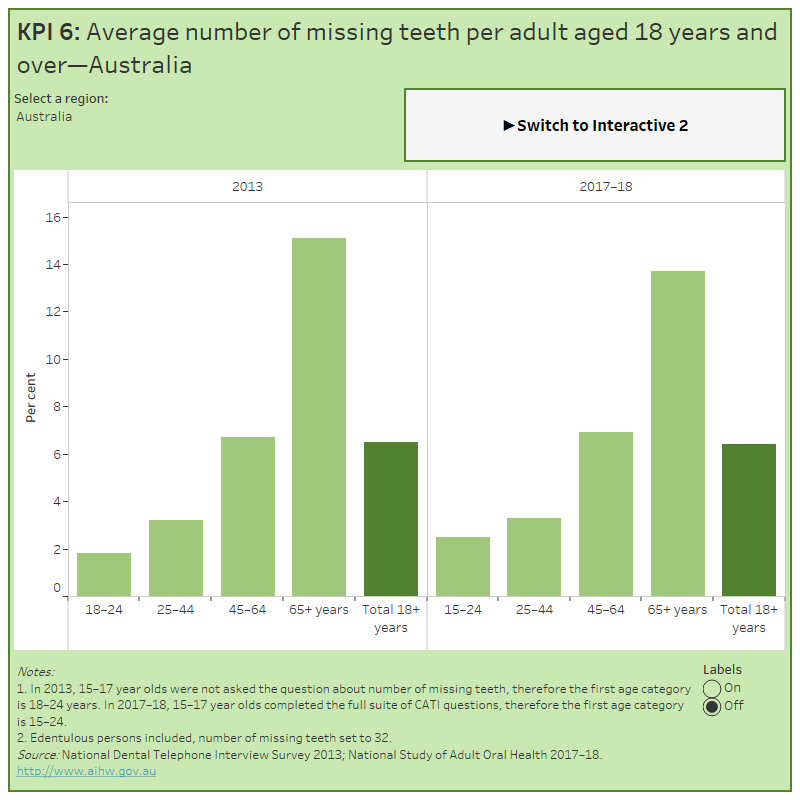Mean number of missing teeth
KPI 6: Mean number of missing teeth per person in those aged 18 years or older
Losing teeth is undesirable and is generally the result of disease, such as tooth decay and periodontal disease, or injury, such as mouth trauma. Some teeth may be extracted because extensive disease precludes other treatment.
The average number of missing teeth in adults aged 18 years and over has remained relatively stable from 6.5 in 2013 to 6.4 in 2017–18.
In 2017–18, the average number of missing teeth increased with age, from 2.5 for adults aged 15–24 years to 13.7 for adults aged 65 years and over.
Explore the data using the interactive below:
KPI 6 Interactive 1: Average number of missing teeth per adult aged 18 years and over—Australia
This figure shows the average number of missing teeth per adult aged 18 years and over. National, state and territory data is presented for 2013 and 2017-18. In Australia, adults aged 18 years and over had an average of 6.4 missing teeth in 2017-18.
KPI 6 Interactive 2: Average number of missing teeth per adult aged 18 years and over—Public dental clients
This figure shows the average number of missing teeth per adult for public dental clients aged 18 years and over, by state and territory, between 2014-15 and 2017-18.

Data tables available for download.
More information about missing teeth.
|
Definition |
Mean number of missing teeth per person in those aged 18 years or older Numerator Denominator |
|---|---|
|
Desirable rate |
Low |
|
Data sources |
Public dental NDTIS NSAOH |
|
Inclusions |
Age group Survey response (NDTIS) Examination (NSAOH & public dental) |
|
Exclusions |
None |


